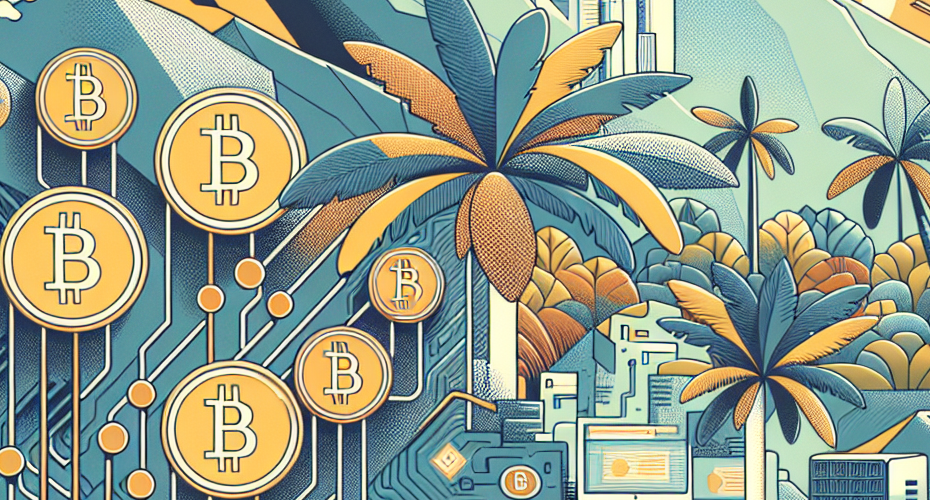Bitcoin is one of the most famous cryptocurrencies in the world, and its fluctuations in value have been closely watched by many. In particular, the Bitcoin halving is a key event in the network, occurring every four years and halving the supply of Bitcoin. These halving events directly affect the price of Bitcoin and are considered important by miners and investors alike.
In this article, we'll take a look at the history of Bitcoin halving, the major events that have occurred during each halving, their impact on the market, and even predictions for the future. This will give you a deeper understanding of how Bitcoin halving has affected the crypto economy.
The concept and importance of Bitcoin halving
Bitcoin's halving is one of the important events in the Bitcoin network, meaning that after a certain number of blocks, the reward for mining is halved. This causes the supply of Bitcoin to gradually decrease, which has a significant impact on the market.
Definition and Mechanism of Half-Life
- Halving is when mining rewards are halved every 210,000 blocks on the Bitcoin network.
- The initial Bitcoin mining reward was 50 BTC, which was reduced to 25 BTC in the first halving, and continued to be halved thereafter.
- These halving cycles occur approximately every four years and last until a total of 21 million bitcoins have been issued.
Economic impact of half-lives
- Decreased supply: The halving limits the supply of new bitcoins on the market, increasing the scarcity of bitcoins according to the law of supply and demand.
- Price fluctuations: Bitcoin prices generally tend to increase after halving, which has a significant impact on investor expectations and market sentiment.
- Miner profitability: As mining rewards decrease, miner profitability may also decrease, which creates a situation where operating costs such as mining fees and electricity must be considered.
History and examples of Bitcoin halving
- First halving (2012): At this time, the price of Bitcoin started at around $12 and rose to $260 a few months after the halving.
- Second halving (2016): During this time, the price of Bitcoin was around $650, and it surged to around $2700 in the year after the halving.
- Third halving (2020): In the most recent halving, the price of Bitcoin was around $9000, and has since soared to a high of $64,000.
The above should give you an idea of how important Bitcoin halving is to the network and the market. Halving is considered an important event for investors and miners alike, as it increases the scarcity of Bitcoin and can be a catalyst for price increases.
The first bitcoin halving: 2012.
Bitcoin's first halving occurred in 2012, marking one of the key inflection points in Bitcoin's history. This halving serves as an important mechanism for regulating the supply of Bitcoin and driving its long-term price growth. Let's take a closer look at what happened and its impact.
Bitcoin market conditions before the halving
- At **start**: Since Satoshi Nakamoto first announced Bitcoin in 2009, miners have been rewarded with 50 bitcoins per block.
- Initial price fluctuations: Bitcoin was initially traded for very little value, just a few cents, but as it gained more awareness and price slowly increased through 2010 and 2011.
- Mining difficulty: Before the halving, it was possible to mine Bitcoin with relatively low difficulty, but over time, the difficulty of mining has increased.
Impact of half-life
- Block reward changes**: On November 28, 2012, the first halving occurred, reducing the block reward from 50 BTC to 25 BTC.
- Market reaction: After the halving, the price of Bitcoin increased sharply, which is related to increased scarcity due to supply restrictions.
- Long-term impact: The first halving, like subsequent halvings, played an important role in Bitcoin's price stability and sustainable growth.
The technical process of half-life
- Block generation time: The Bitcoin network is designed to generate a new block about every 10 minutes on average.
- Limiting the total supply: Through halving, the total supply of Bitcoin is limited to approximately 21 million. This is an important factor in curbing inflation of the digital asset.
- Changes in miner strategy: Halving has forced miners to use more computing power and power-efficient equipment to increase efficiency.
The second bitcoin halving: 2016.
2016 was the year of the second Bitcoin halving, which had a significant impact on the Bitcoin ecosystem. In this article, we'll take a look at the 2016 Bitcoin halving and its impact.
The basic concept of Bitcoin halving
Bitcoin halving occurs about once every four years, when the amount of bitcoins being paid out as block rewards is halved. This serves to curb the growth of Bitcoin's supply and increase its scarcity.
- The first half-life: November 2012.
- The second half-life: July 2016.
- The third half-life: May 2020
Details of the 2016 Halving
The 2016 halving occurred in July, when the block reward was reduced from 25 BTC to 12.5 BTC, which had a major impact on miners.
- Date of occurrence: July 9, 2016
- Block reward change: 25 BTC -> 12.5 BTC
- Impact: Reduced mining revenue, network hash rate fluctuations
Price and market reaction
Before and after the 2016 halving, Bitcoin's price experienced significant fluctuations, which we summarize below:
- Before the halving: Bitcoin price rises
- Immediately after halving: short-term decline
- In the coming months: the long-term bull market continues
To summarize in a table
| Timeframe | Price Trends
|————-|———————|
| Before halving | Price increase
| Immediately after halving | Short-term decline
| Next 6 months | Long-term gains
As a result of the 2016 halving, the Bitcoin ecosystem has become more mature, which has had a positive impact on the cryptocurrency market as a whole.
The third Bitcoin halving: 2020
The third Bitcoin halving, which occurred in 2020, was a significant event that had a major impact on the cryptocurrency market. This halving is the point at which Bitcoin's mining rewards are halved, which can increase the rarity of Bitcoin and affect its price fluctuations.
Key features of half-lives
The third Bitcoin halving occurred on May 11, 2020. Basically, this event reduced the reward for mining a new block from 12.5 BTC to 6.25 BTC. This change reduces the supply rate of Bitcoin, which could potentially be a factor in the price increase.
* Date: May 11, 2020
* Previous mining reward: 12.5 BTC
* New mining reward: 6.25 BTC
Market reaction and price changes
The third halving was widely predicted ahead of the event, and it did indeed come to pass. While the price of Bitcoin experienced some temporary fluctuations in the early days after the halving, it steadily increased in the months that followed, as many investors anticipated Bitcoin's increased rarity and long-term appreciation.
* Bitcoin price before halving: approximately $8,800
* Price after 6 months of halving: approximately $20,000 or more
Impact of miners
The halving of mining rewards has a significant impact on miners. With electricity and equipment costs remaining the same and income being halved, miners will need new strategies to reduce operating costs. Some small-scale miners could find it difficult to stay in business.
* Reduced reward: 50%
* Increased projected operating costs
* Difficulties for small miners
The third Bitcoin halving had a variety of ripple effects across the entire Bitcoin ecosystem, and it remains an important event that will continue to receive attention for years to come.
Analyzing price changes in halving
Bitcoin halving is a significant event that reduces the supply of Bitcoin, which can cause price fluctuations. In this section, we'll analyze historical data and patterns from previous halving events to try to predict future price movements.
Historical halving and price weakness
Historically, Bitcoin has experienced significant price gains after halving, but it has also tended to experience short-term price declines immediately following halving. The table below summarizes the dates of previous halving and the resulting price movements:
| Half-life date | Price before halving | 1-year post-halving price |
|---|---|---|
| November 28, 2012. | $12 | $1,000 or more |
| July 9, 2016. | $650 | $2,500 or more |
| May 11, 2020 | $8,700 | $60,000 or more |
As you can see in the table above, Bitcoin's price has seen a long-term uptrend since the halving, but it has also seen short-term dips, indicating that investors have been sensitive.
Market sentiment and expectations
Before and after halving, there are different expectations and psychology at play in the market. In general, before a halving, buying tends to be strong due to renewed upside expectations, and after a halving, selling may ensue as those expectations temporarily fade. Understanding these patterns can help investors make better investment decisions.
- Before the halving: Upside expectations drive buying
- After the halving: Selling increases as expectations fade
Looking to the future
Future halving of Bitcoin is likely to follow a similar price movement pattern to the current one. However, each halving may react differently depending on market conditions at the time, public perception, global economic conditions, etc. It is important to carefully analyze current market trends while referencing historical data.
Investors should also consider a variety of factors related to halving. We recommend that you consider technical analysis, your financial situation, global issues, and other factors to make an informed investment strategy.
Impact on Bitcoin miners
Bitcoin halving has many implications for Bitcoin miners. In this section, we'll cover these impacts in detail.
Changes in profitability
- Reduced mining rewards: When halving occurs, the reward per block produced is halved. This means a significant decrease in profitability for miners.
- Operating costs versus revenue: Operating costs, such as electricity and hardware costs, do not change, so when revenue is halved, miners are forced to become more efficient.
Hash rate fluctuations
- Possible hash rate decrease: Some miners may stop mining due to decreased profitability. This can affect the overall network hashrate.
- Increased competition: Competition among remaining miners may become more intense, which can lead to changes in hash rate stability.
Long-term survival strategies
- Technology update: Upgrades to newer mining rigs with lower power consumption and higher efficiency are required.
- Cost management: To reduce operating costs, considerations include relocating to a region with lower electricity costs or utilizing renewable energy.
Bitcoin halving has a significant impact on the economic landscape for miners, requiring a variety of strategic responses.
Predicting future Bitcoin halving
Bitcoin halving occurs approximately every four years, meaning that the block reward is halved. These halving periods significantly change the economics of Bitcoin mining and have a major impact on the market. Predictions of future Bitcoin halving are made based on a variety of factors.
Predicting when the next half-life will be
Bitcoin's next halving is expected to occur in mid-2024.
After this halving, the block reward will be reduced from the current 6.25 BTC to 3.125 BTC.
The exact timing may fluctuate slightly depending on the mining rate and hashrate of the network.
Market impact
As the halving approaches, the market may anticipate a decrease in the supply of Bitcoin and expect the price to rise.
In the past, large price increases have occurred in the months following halving, but this is not a guaranteed pattern.
Investors and exchanges need to be prepared for increased volatility due to halving.
Miners' strategy changes
Reduced mining rewards can cause profitability issues for miners.
As a result, many miners will make strategic changes, such as becoming more energy efficient and adopting the latest mining equipment.
Some small miners may lose their competitiveness and be forced out of the market.



